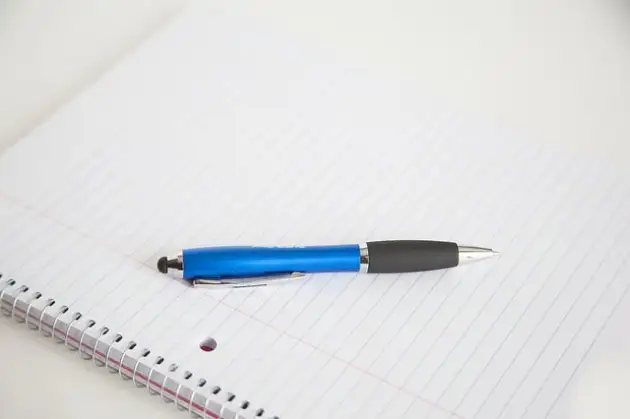Take Things To The Next Level With The Notepad Technique
Feb 28, 2014As I near the end of the recording phase of a project I like to finish with this little exercise. I call it simply the Notepad Technique, and it has saved my butt and helped me take my recordings from OK to awesome many times.
No matter your skill level, your DAW of choice, or your budget, everyone can implement the Notepad Technique and reap the rewards. All you need is a blank pad of note paper and a pen. What you do with it next can take your tracks to the next level.

Via Wellness GM Flickr
Think Like Your Audience
The entire recording process you’ve been wearing many hats and playing many roles. You’ve juggled the roles of songwriter, performer, producer, and engineer and you’ve hopefully captured some killer recordings. But before you sign off on these tracks and move on to mixing, you need to wear one more hat: your audience’s.
The goal of a great song and recording is to move the end user, the listener! So what better way to ensure your tracks do that well than to listen back to them like a they would? And that’s exactly what the Notepad Technique is all about, getting you to see what’s missing in your tracks from a listener’s perspective.
Engaging From Start To Finish
I personally believe that the goal of every great recording is to capture the listener’s attention from beginning to final note. There should be no wasted time. Each moment should draw the listener in deeper. If your song were playing on the radio, there should be no moment that the listener would even consider grabbing the dial and changing the station.
This is where the notepad comes in. Simply open up your session, one song at a time, press play and look away from the screen. In fact, close your eyes. Begin trying to enjoy the song as a listener, not as an engineer. The moment something in the song seems a bit to repetitive, boring, or anti-climatic take note of where it is and what feels wrong.
It could be that the chorus really doesn’t bump in excitement like you thought. It could be that verse 2 seems to drag, especially hearing the hook in the chorus. It could be that the bridge is just too darn long. Whatever your first thought is when you get to it, write it down on the notepad.
Get Specific, Create Solutions
After your first time through the song where you’ve identified any weak points in the song, it’s time to get specific and come up with some solutions. Perhaps you need a synth pad in the second verse to keep things interesting, or maybe it’s some hand percussion in the chorus to push the energy up a notch. Just write down what you intend to do about the issues.
The key point here is to come up with solutions that you can actually implement. Remember, you’re at the end of the recording phase. The goal isn’t to extend things much longer. You don’t need a “perfect” recording with a string quartet. Perhaps some sampled strings will do the trick.
At this point in the game your recordings should be awesome, these final elements will simply fill in the gaps and keep the listener’s attention for the duration of the song.
Keep This Move Analog
Here’s one final suggestion. One of the biggest reasons the Notepad Technique works is because it’s analog. That’s right, you’re using real paper and pen. Why does this matter? Because it forces you to do something we rarely do anymore when working in the studio, look away from the screen!
Having some paper on your desk or lap, is a clever little hack to get you to stop “seeing” your tracks and instead “hear” them for what they really are. You’ll be surprised just how much more you pick up on when listening to the songs this way.
Trust me: skip the digital note taking options and keep this move analog.
Discover The 6 Steps for Creating a
Radio-Ready Song from Scratch"
Enter Your Email Below To Receive The Free 17-page PDF,
"6 Steps To A Radio-Ready Song"
We hate SPAM. We will never sell your information, for any reason.

